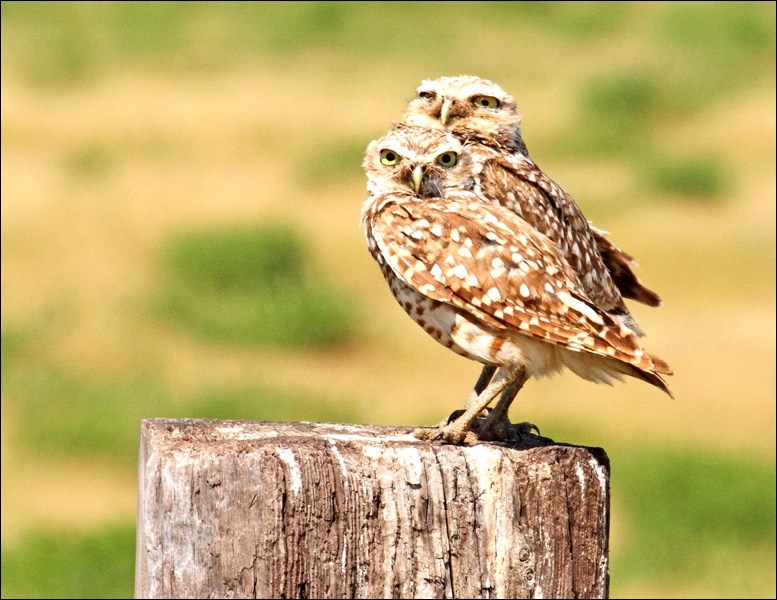After spending the winter in sunny Mexico and the Southwestern United States, one of Saskatchewan’s most iconic species at risk has returned to their breeding grounds for the season – welcome back burrowing owls.
After migration, these endangered owls are busy. They are starting the mating process, finding a home and laying and incubating eggs.
Burrowing owls are identifiable by their small size; they are only nine inches tall. They have light and dark brown mottled plumage with white spots, a round head with large yellow eyes and white “eyebrows.” One of their key features is their long, featherless legs that give the appearance of walking on stilts. Unlike some other owl species, burrowing owls are active during the day, especially in the spring and early summer when the male is busy gathering food for his family. During the nesting season, male burrowing owls can often be seen standing next to the burrow or on nearby fence posts while the female is in the burrow incubating the eggs. Burrowing owls make a few different chuckling or chattering calls and bob their heads to express excitement or distress.
To ensure the nesting success of burrowing owls, it is important to minimize human activity around the nests as much as possible. However, burrowing owls coexist with grazing well. In fact, grazing is extremely beneficial to the burrowing owl. Kaytlyn Burrows, habitat stewardship co-ordinator at Nature Saskatchewan, explains, “On grazed pastures, the shorter grass gives burrowing owls the chance to sight possible predators more effectively. Additionally, the owls use manure inside their nests to absorb excess moisture, regulate burrow temperature, attract insects for food and hide their scent from predators.”
There are many advantages to having these owls on pasture land, especially the free pest control.
“Burrowing owls eat huge numbers of insects, mice, voles and grasshoppers,” says Burrows. “One nest of burrowing owls can consume more than 1,000 or more rodents in a single season.”
Nature Saskatchewan’s stewardship program Operation Burrowing Owl works with landowners to conserve and enhance burrowing owl habitat, and monitors burrowing owl numbers at participating sites.
“We are very fortunate to have so many passionate landowners participating in the program and keeping a look-out for burrowing owls,” says Burrows.
Operation Burrowing Owl records sightings to help determine the population trend and distribution of the burrowing owl throughout Saskatchewan. The information can then be used towards efforts to restore the population of these amazing creatures.
“Without the voluntary efforts of landowners, land managers and the general public, recovery of this unique prairie owl would not be possible,” says Burrows.
She encourages the public to “get out there this summer and explore, you never know what you will find.” If you are lucky enough to see a burrowing owl, Burrows asks that you call Nature Saskatchewan’s toll-free HOOT Line, 1-800-667-HOOT (4668) or email [email protected].
“When you report a sighting you are playing a very important role in burrowing owl recovery. Every sighting is critical,” says Burrows.
Private information is never shared without permission.




